
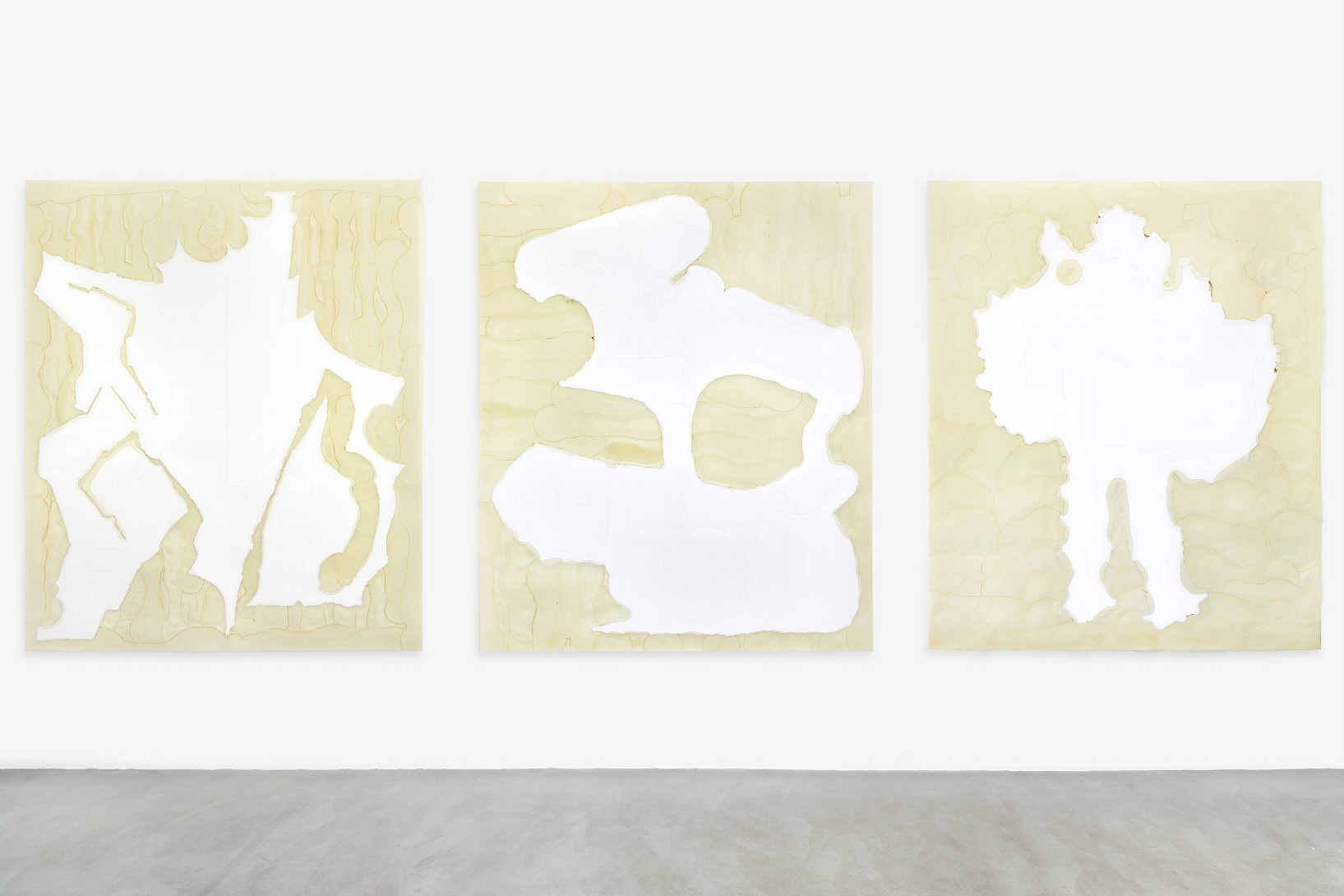
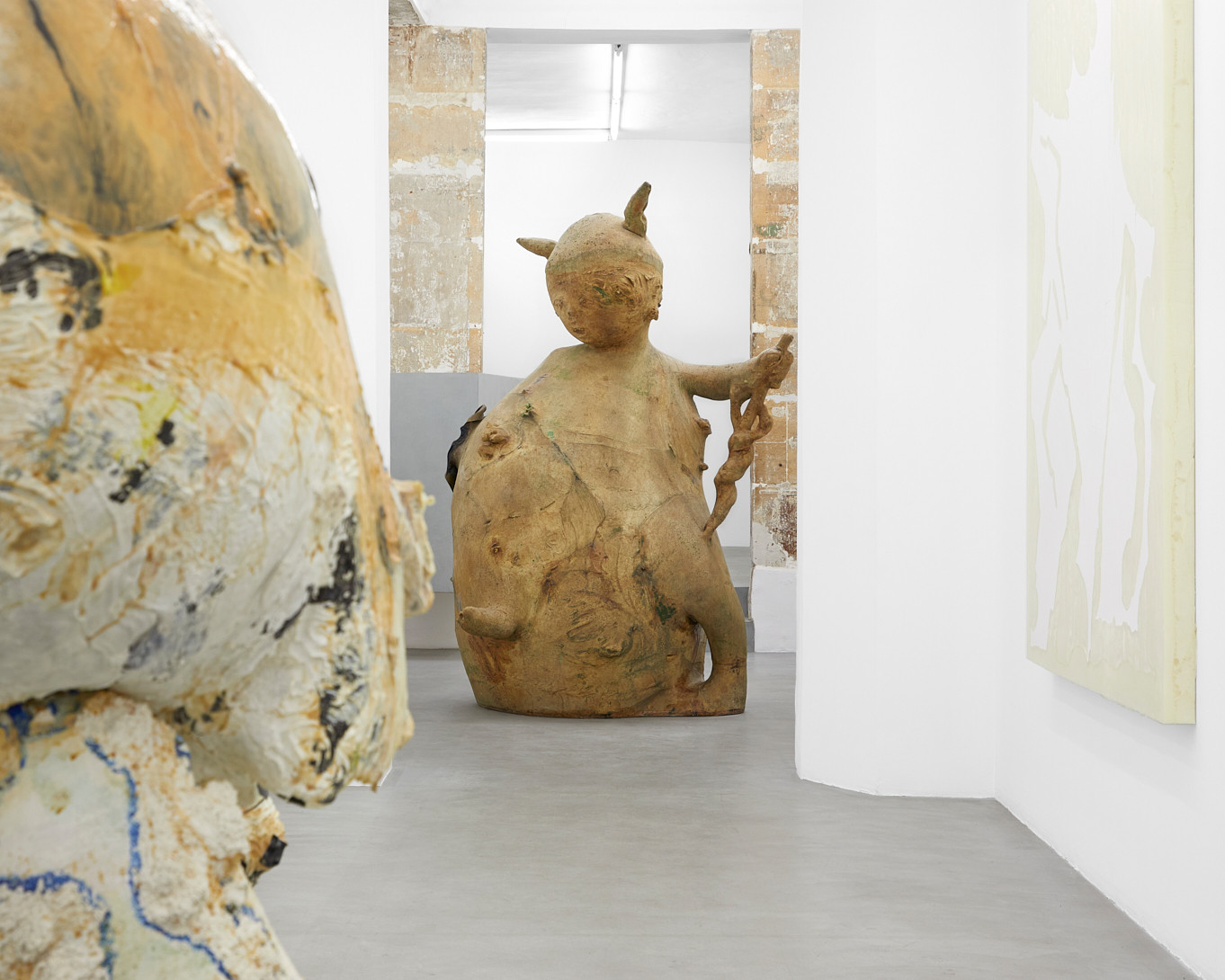
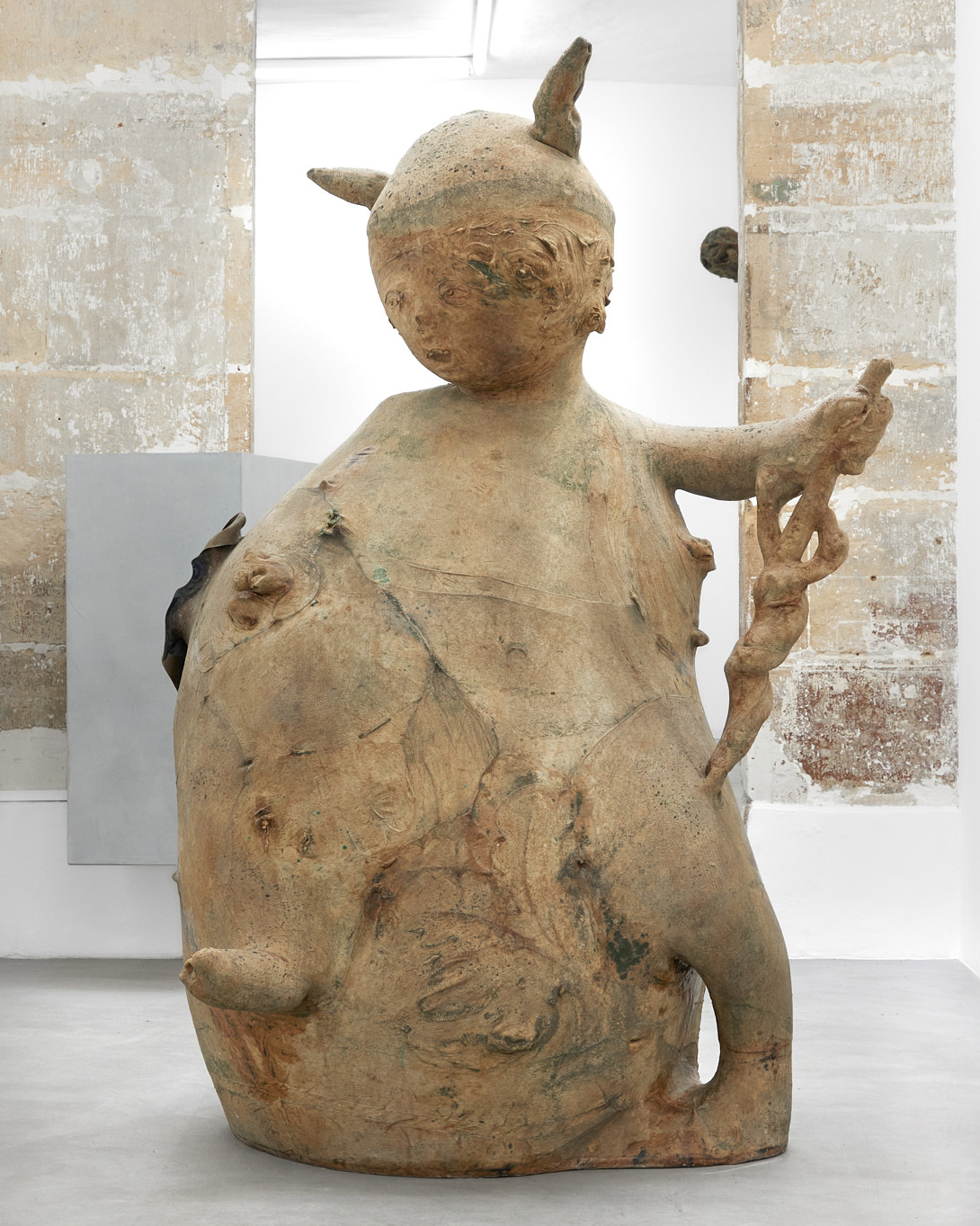
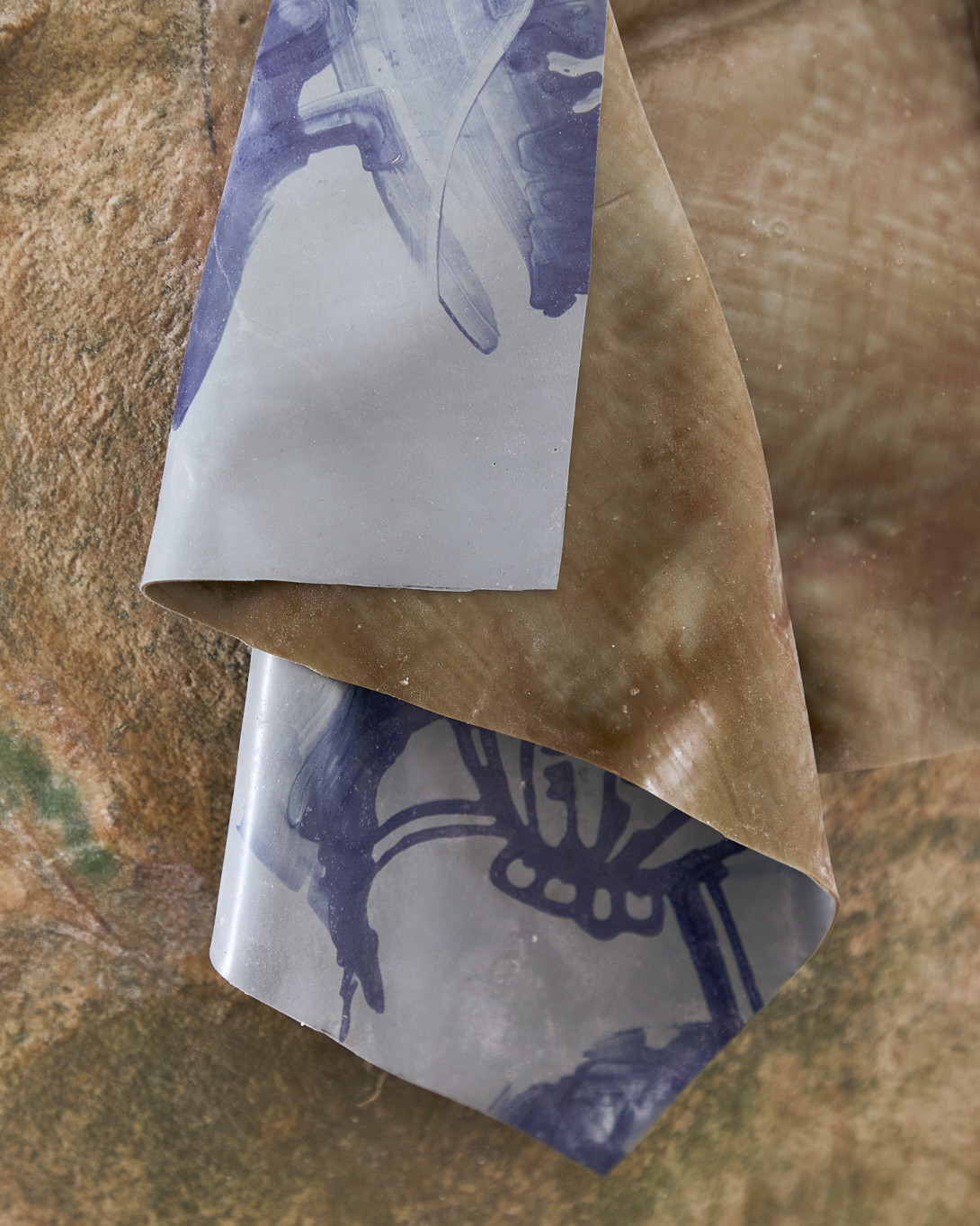
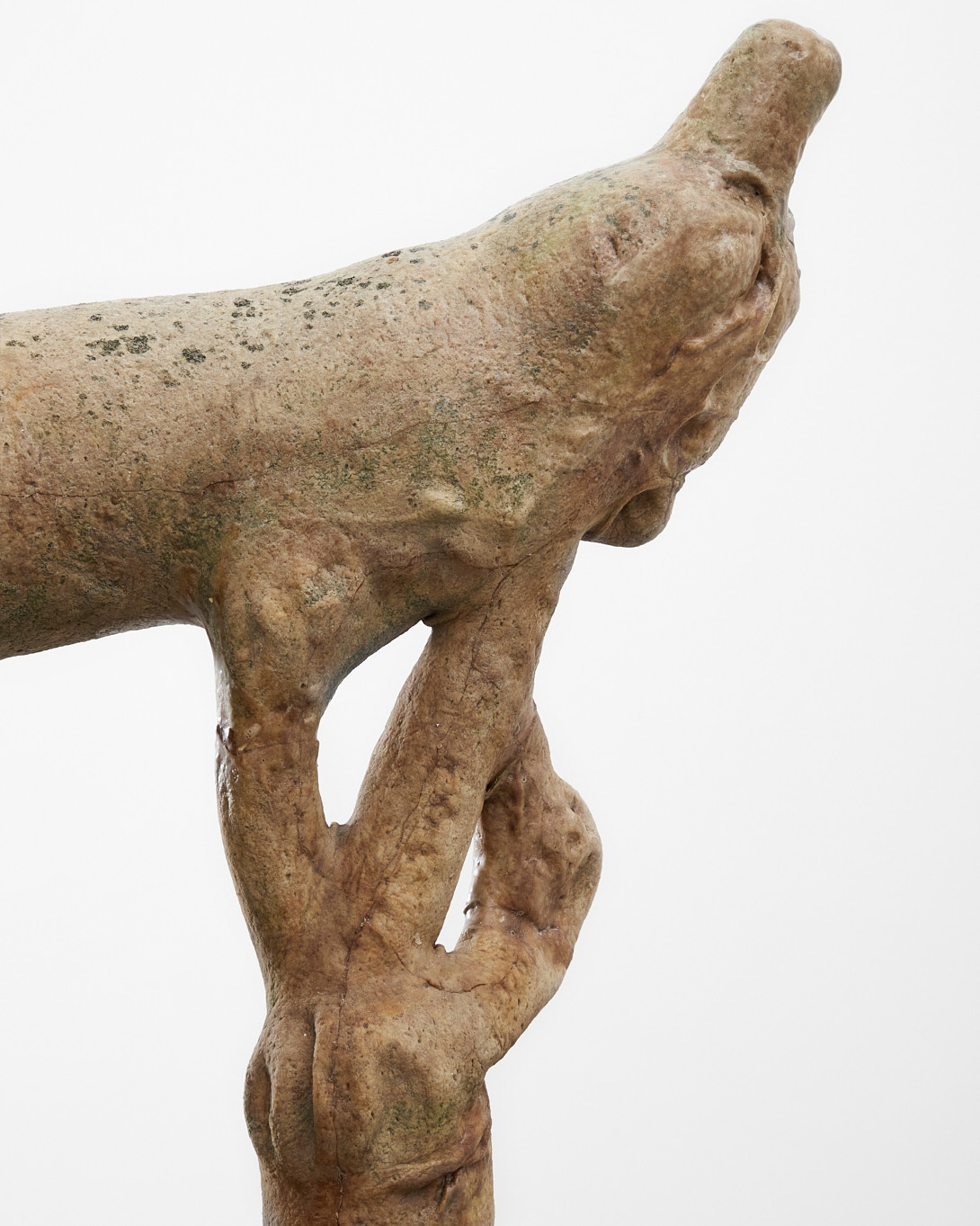
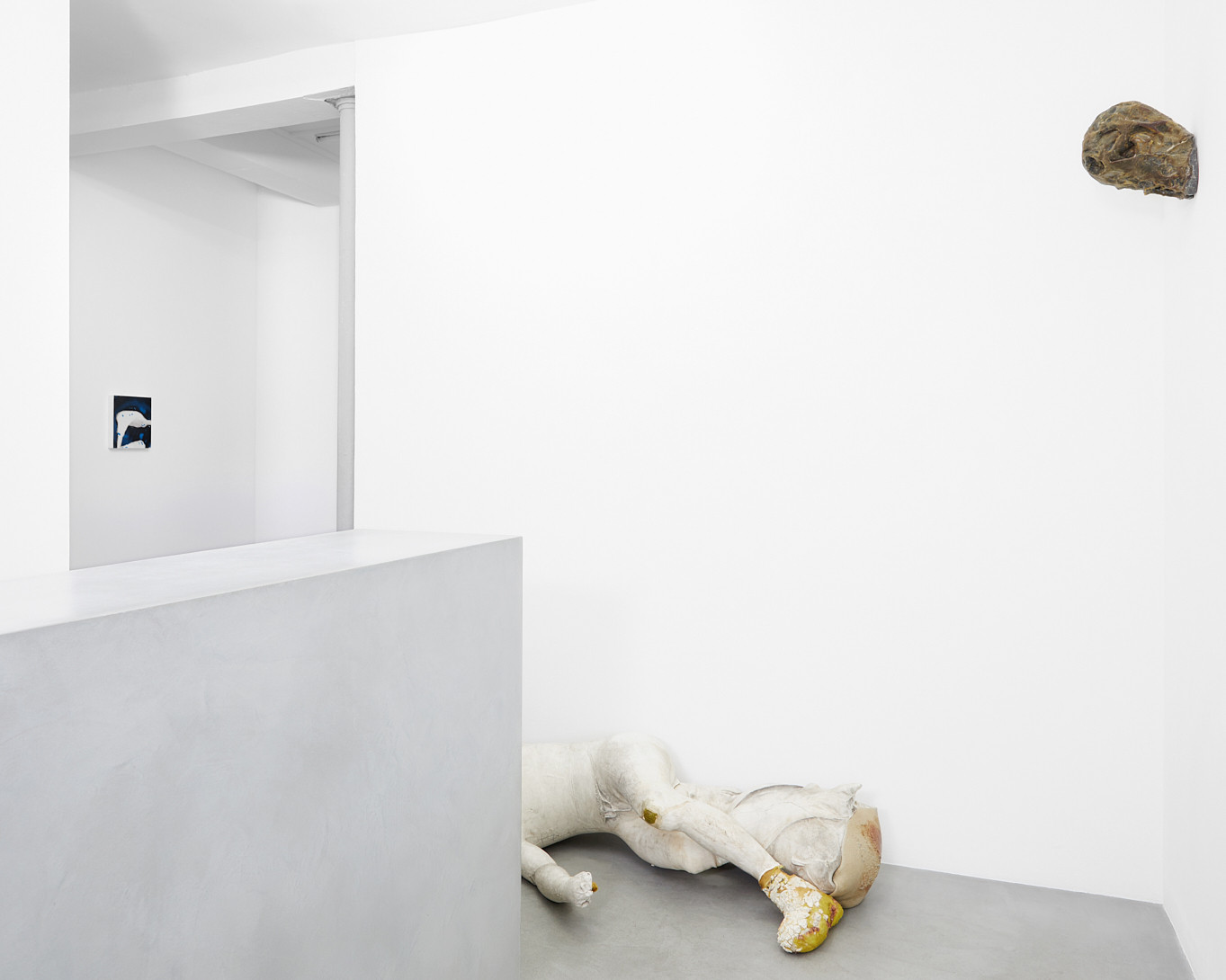
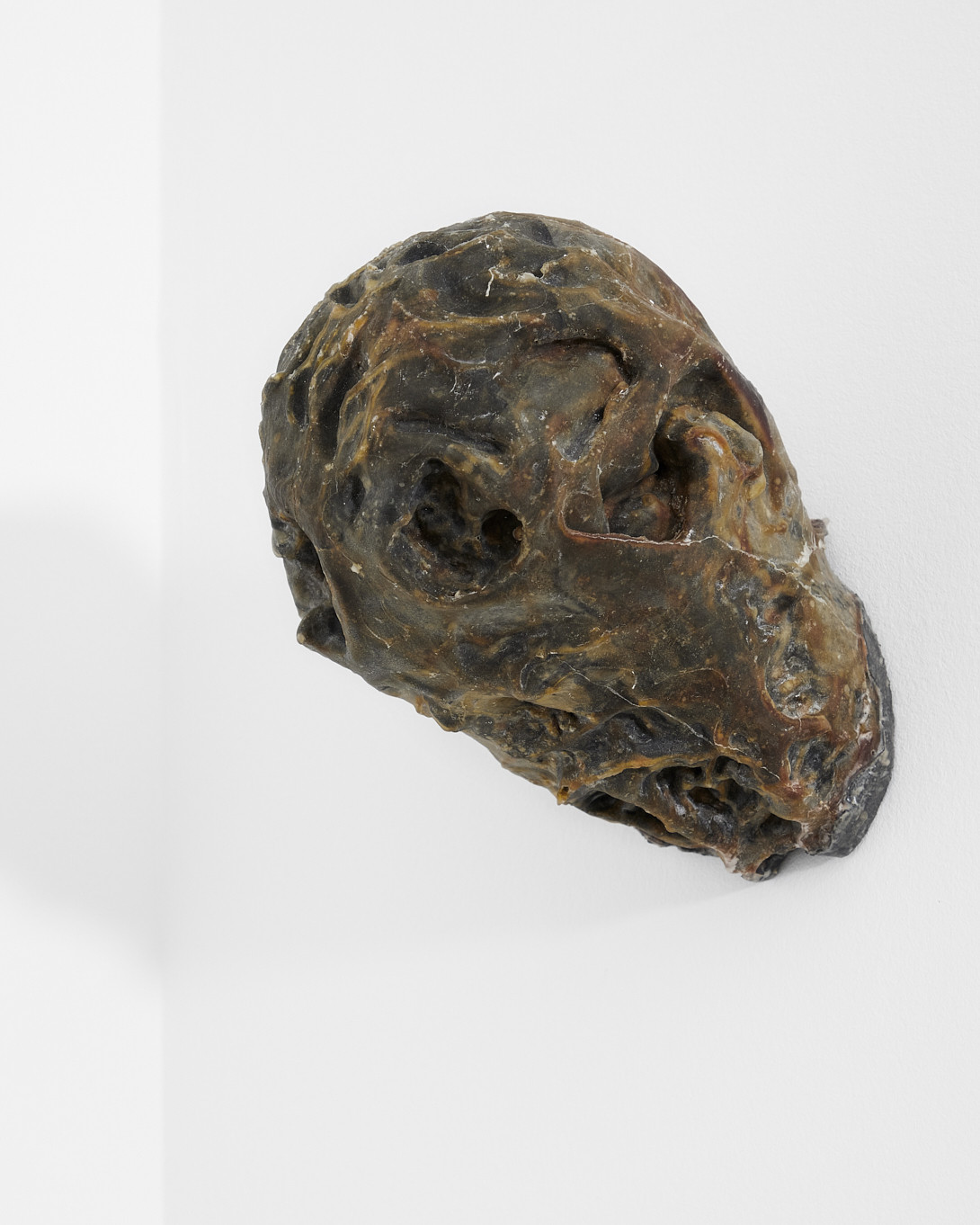
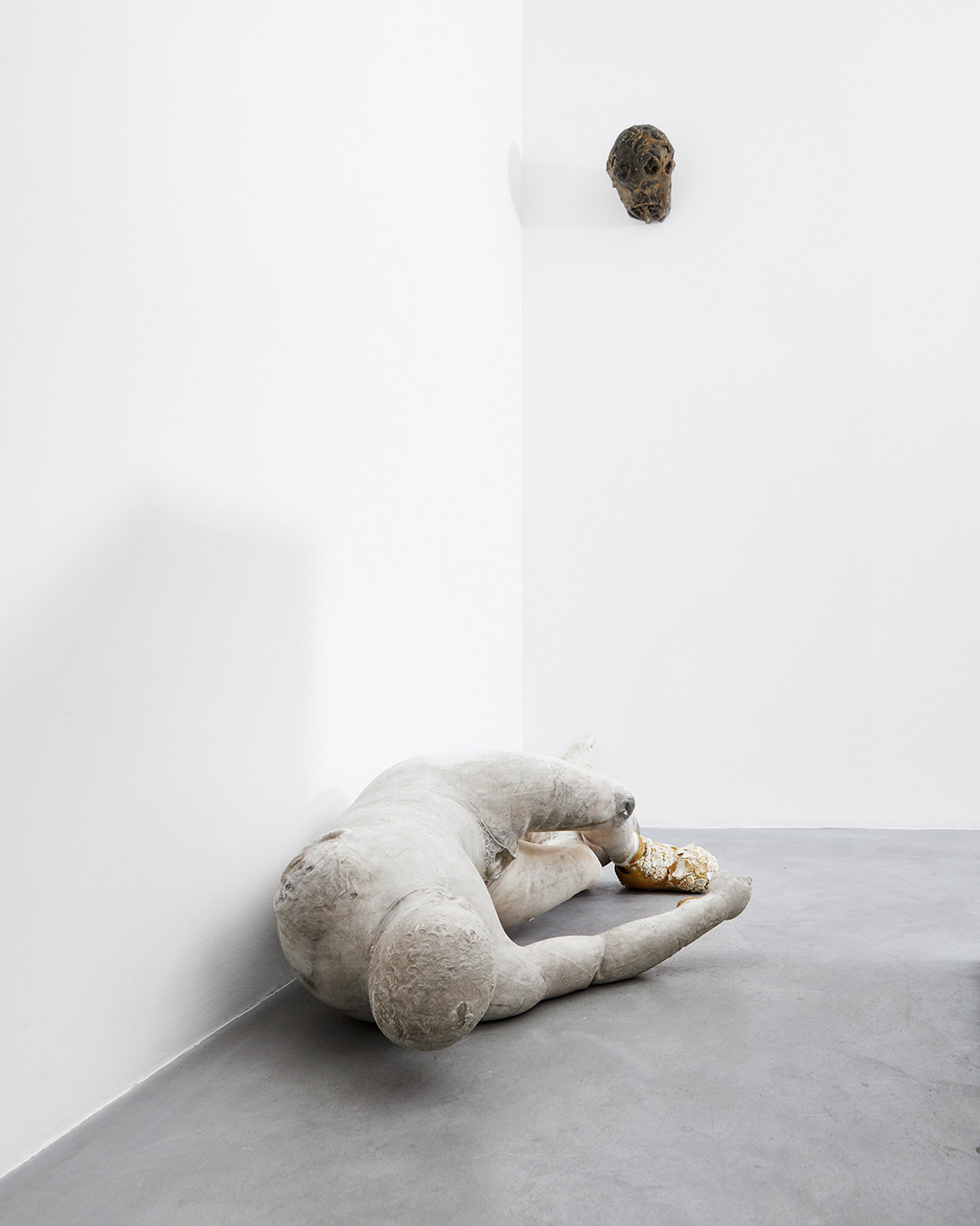
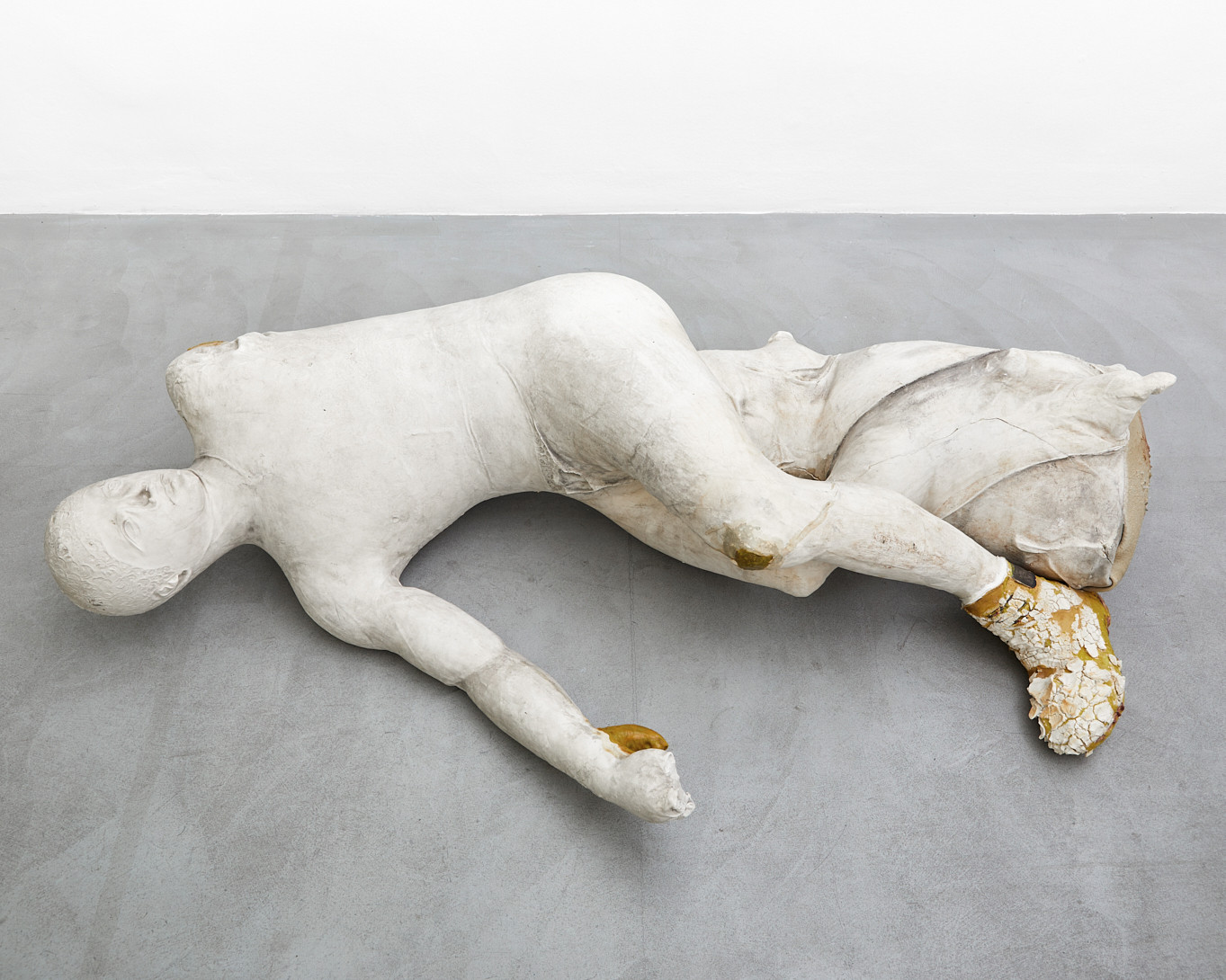
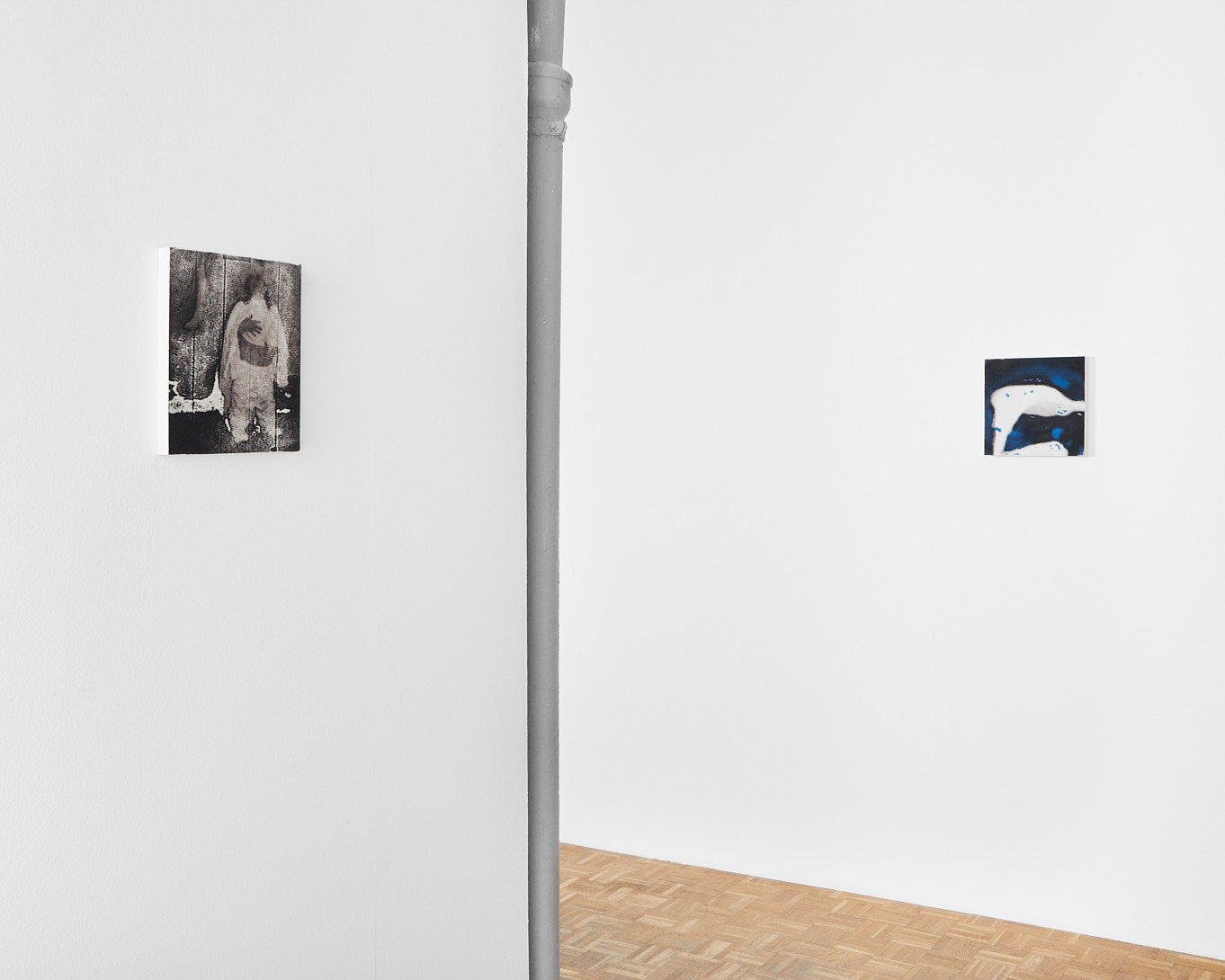

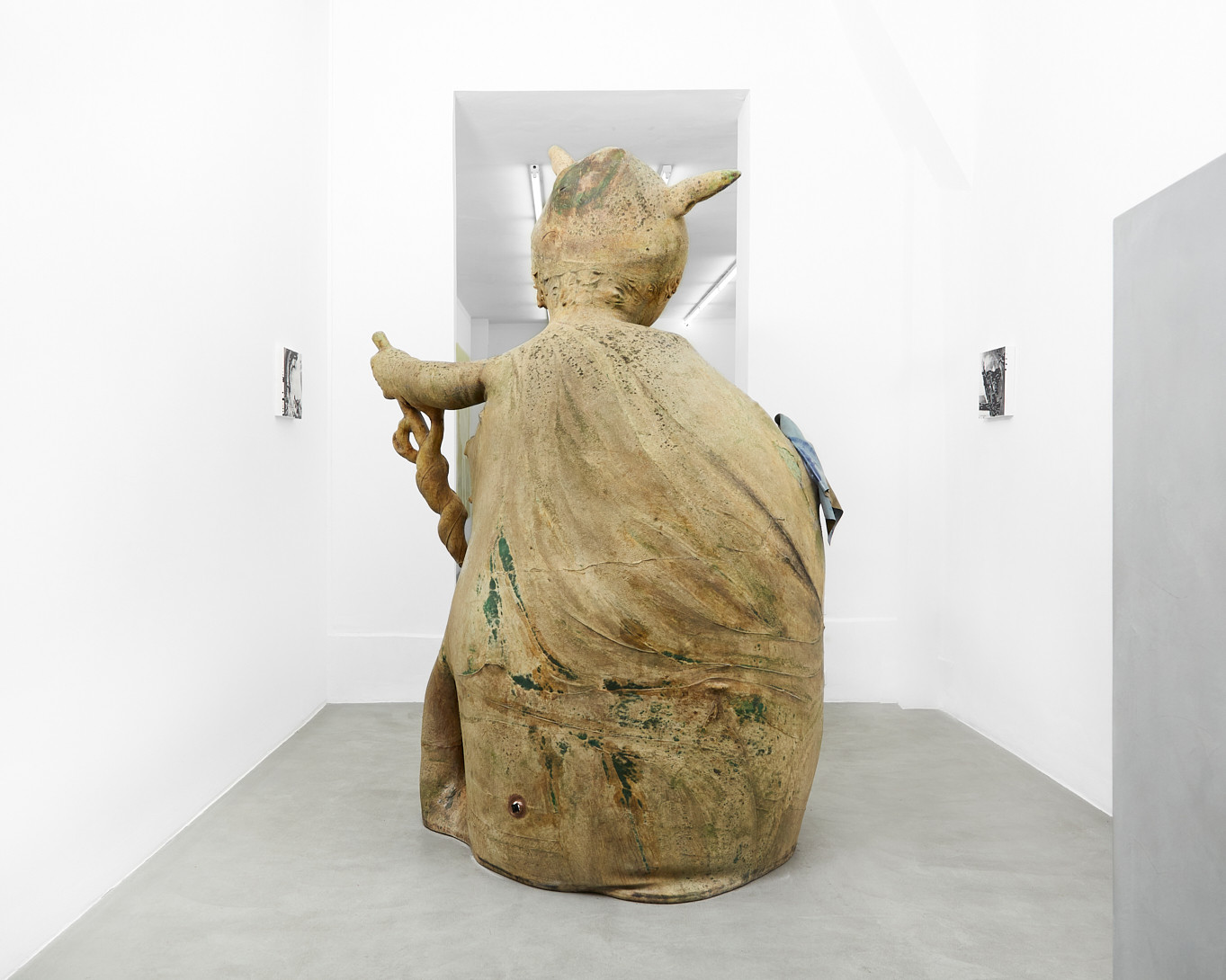
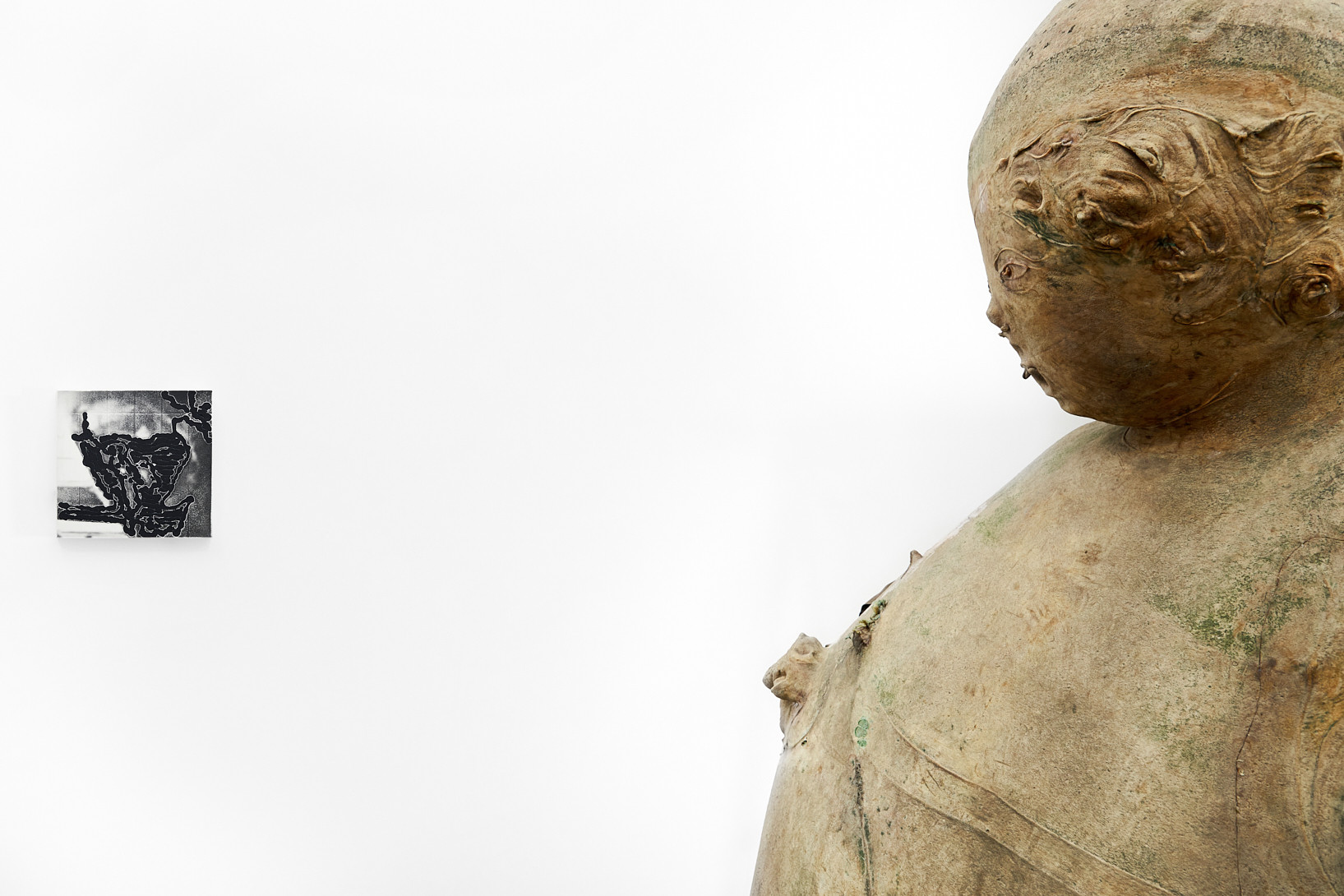
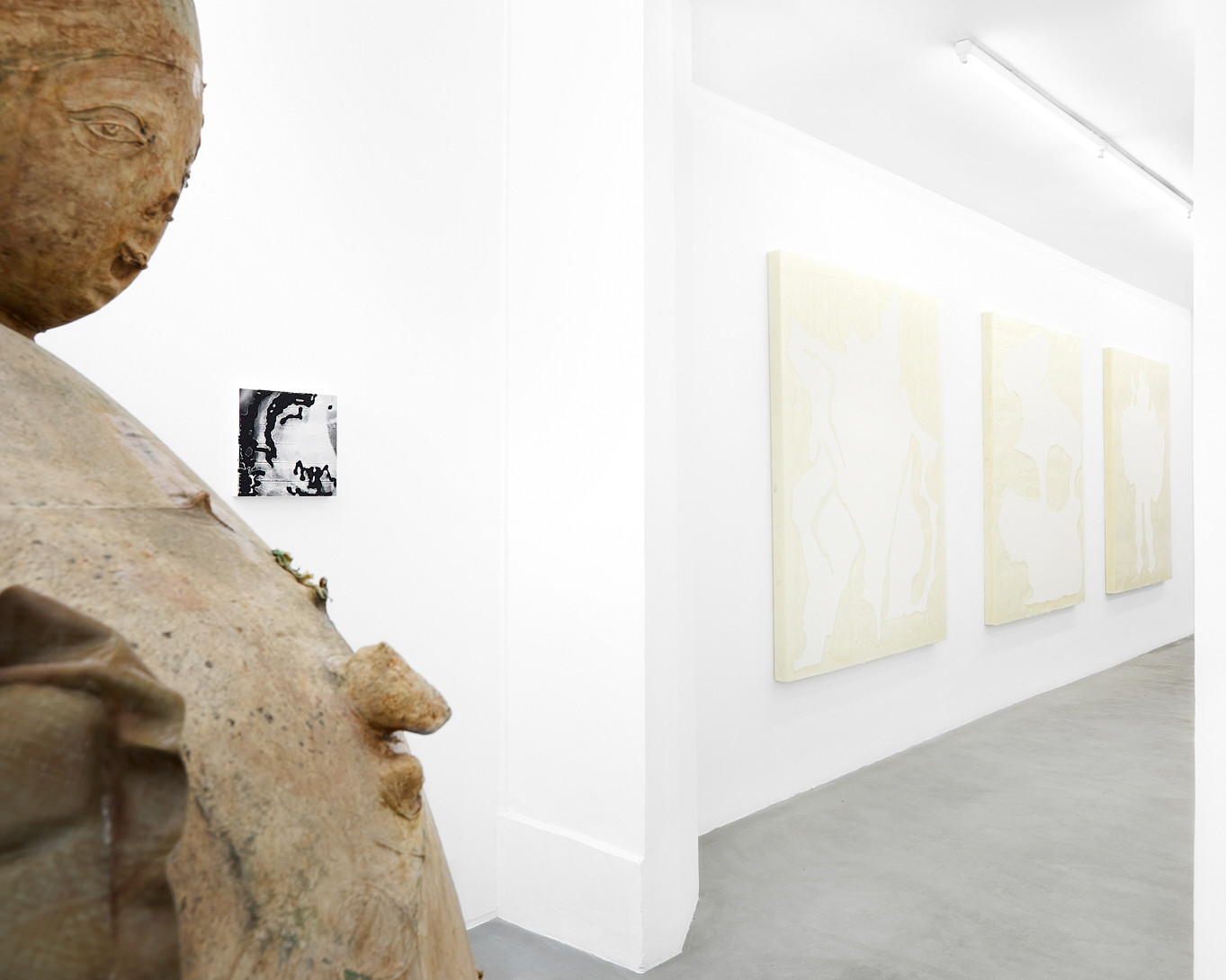
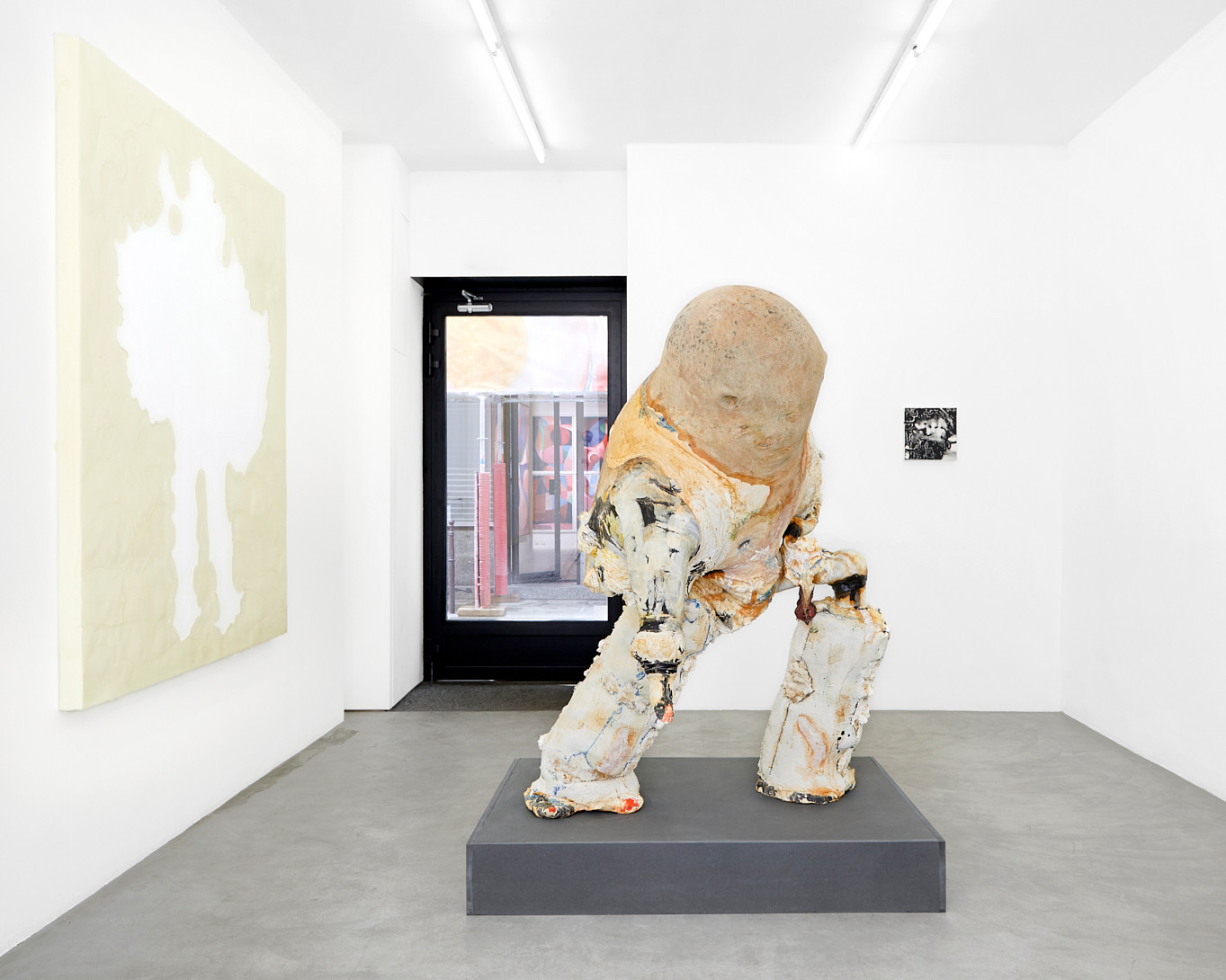
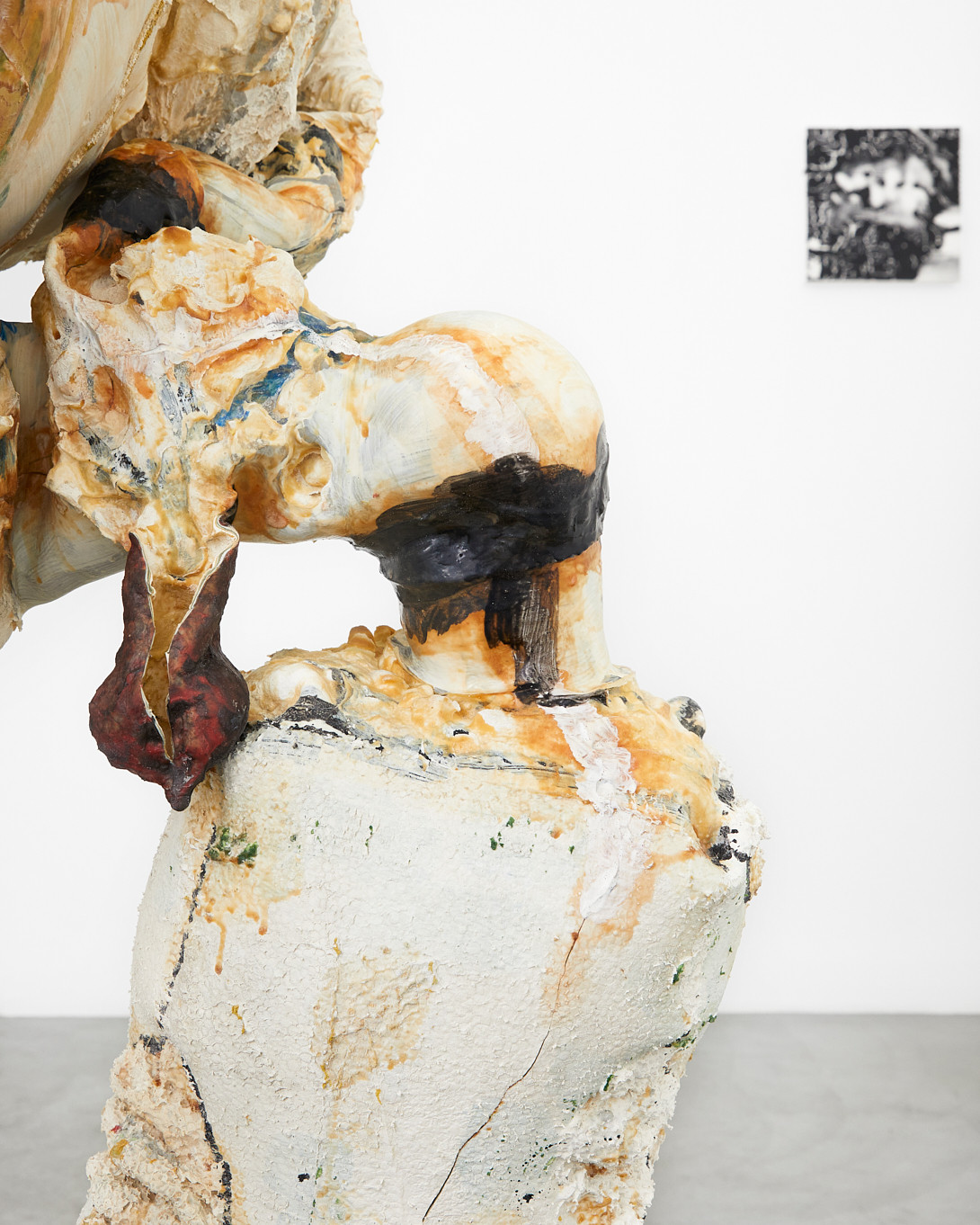
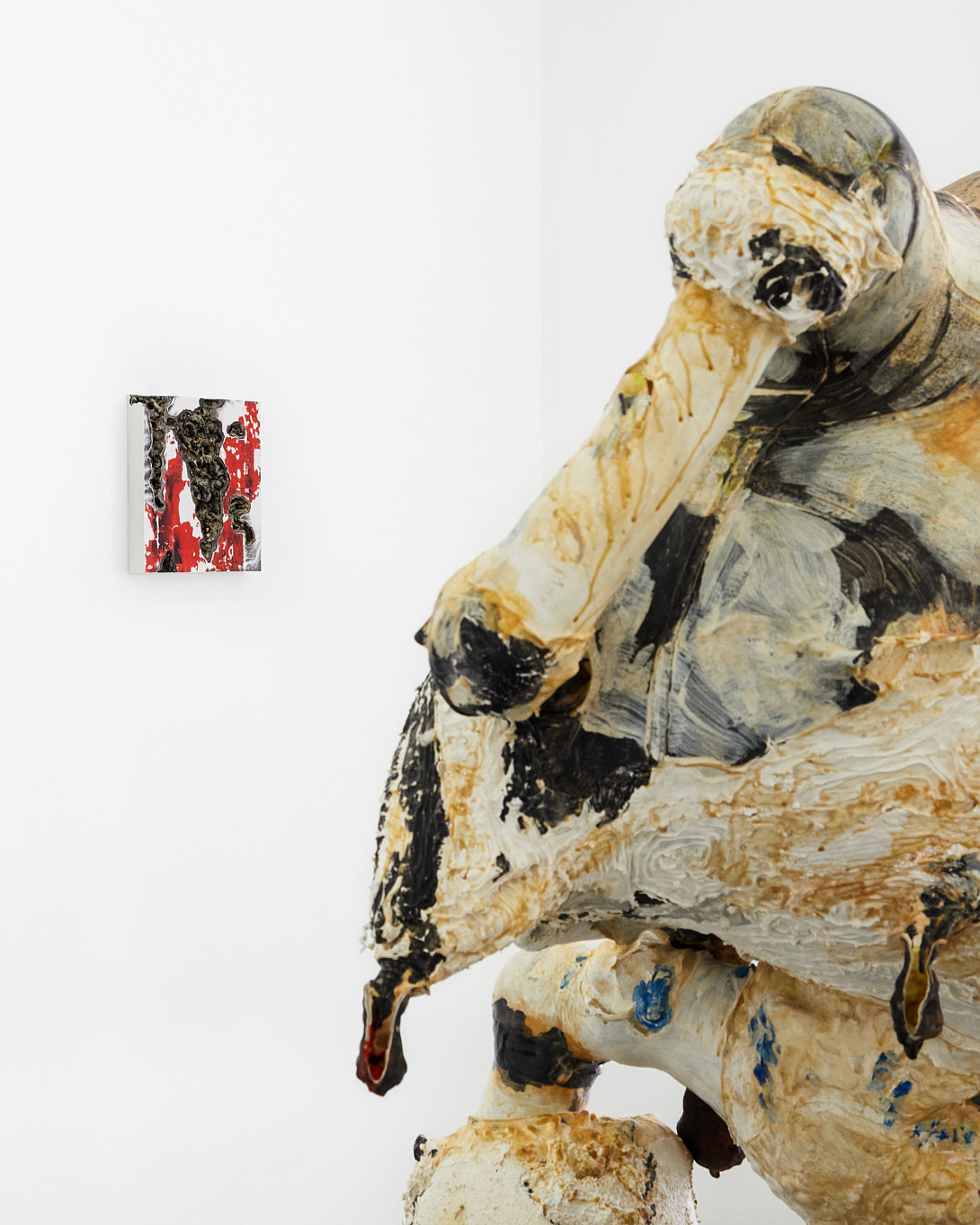
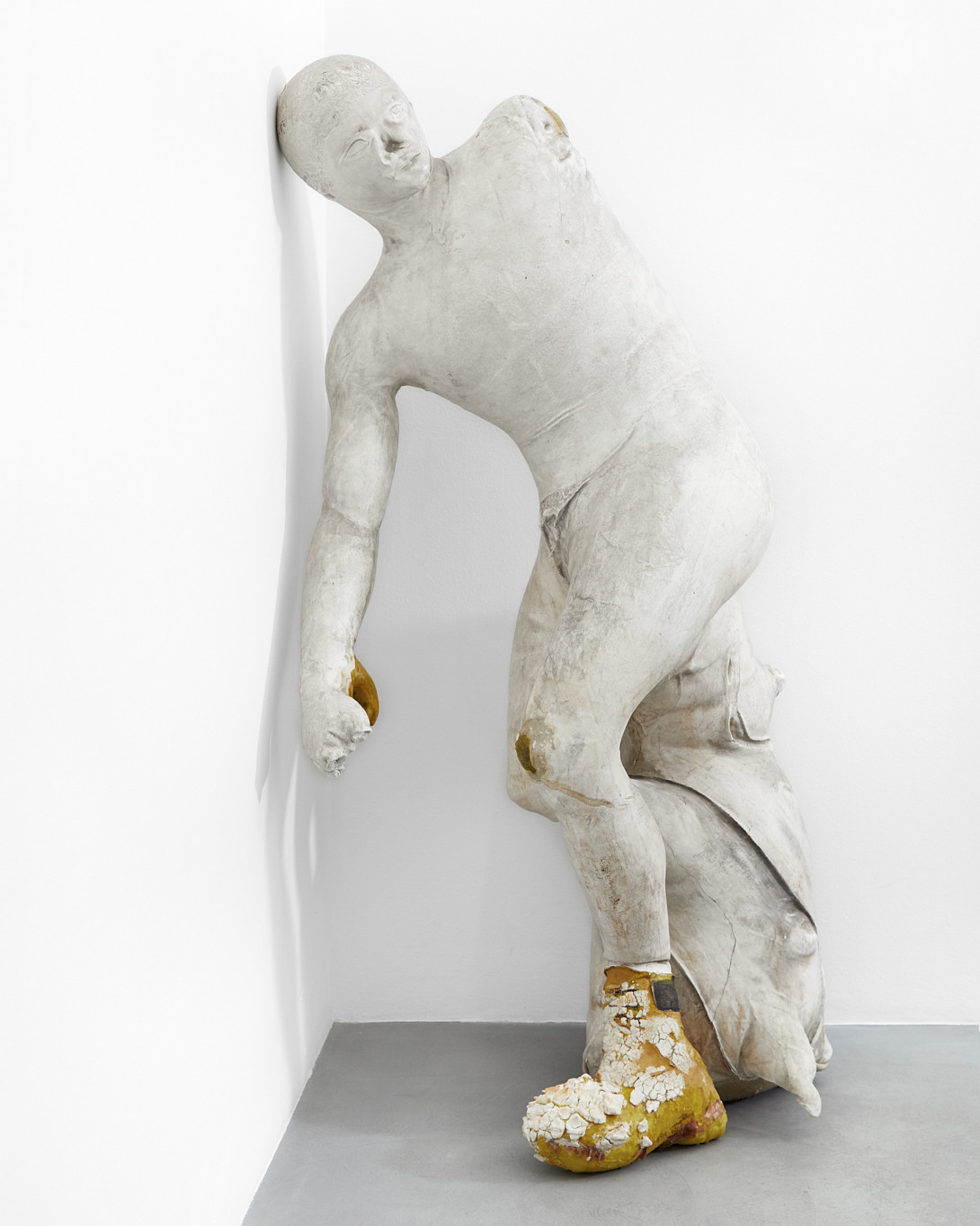
© Credits photo: Thomas Marroni



















A bloated and totemic figure, the ultimate mythological personification of theft, holds the walls of the Maison Cadet. His origins as a moon god have brought him the alternative name of “the one who inflates in the light”. He is the patron saint of thieves, the alchemical son, the messenger with the petasus and the caduceus who leads the souls of the dead to the underworld: Hermes.
“He is big, he is fat, I need it. It is a baby of 230cm.” For several years of clandestine molding in the public space, essentially targeted at statuary art, I have been eyeing the marbles and cut stones of this animal via the internet. La peur du manque (The fear of the lack) sounds like a call, the time has come to make a trophy of this rare specimen. A Monday, at 8pm, I take a train to Brussels with the objective of making a latex imprint of the statue, from head to toe, in five nights. After arriving at midnight and a quick stop at a friend’s house, I went to the Royal Park of the city to start work on the first night, without even knowing where my prey was. At 01:00 am I am on the spot in front of the gates, open. “Not good” I say to myself, in spite of the curfew that must hang around. At the entrance along the wall there is a huge hole, a kind of fallow pit whose bottom I cannot see. Worrying. I walk along the central axis of the park, interspersed with transverse paths that break up the landscape into low mounds where vegetation abounds. Ideal to hide. I go into one of these groves, looking for Hermes.
A few minutes later, I hear howling in the distance and try to get to the source, guided by the very unpleasant music. I discover the beast, a drunkard with a zombie-like gait. He shouts without interruption the name of a woman, Ophélie. He shouts very loudly. Next to him, there she is, the statue of Hermes. I study the situation. I wait for the zombie to move away and climb up the three-meter high base. But the zombie comes back, he turns around the statue, attracted like a magnet. We are very close but he does not see me. He continues his circus and vociferates more and more, it lasts. Suddenly, he kneels down in the middle of the central aisle and with his arms open towards the sky he cries out with all his guts in a desperate “doudouuuuuuuu”. This poor guy is going to draw attention, I can’t start work. At this moment the situation degenerates because I make a mistake. Losing patience with this tragic-comic spectacle, I decide to address the zombie with an unfriendly “move!”. The man stops and remains silent for about ten seconds. I start again: “Move!”. This last summons triggers the fury of the drunk who, without distinguishing the origin of the interpellation, nor my presence, launches into a violent logorrhoea of insults in an inaudible dialect, directed towards the void all around him. I’ve reached saturation point and attack the first layer on the statue, rocked by the song of my wanderer who exhausts himself after about twenty minutes and leaves, good riddance! When I finally think I’m chilled, I guess in the distance the headlights of a car that moves forwards slowly on the main alley and in my direction, it is the police. Not think twice I hide behind Hermes’ body without taking my eyes off the approaching vehicle. It passes a few meters away from me and finishes its prowl. I have a good intuition, I feel protected by the aura of my stone thief.
The next evening, I enter the park to attack the realisation of the new layers of latex. Progressing on the alert in a copse, I bump into a guy on a bench that I greet briefly and pass my way. He follows me. After a few seconds I turn around and tell him “can I help you? “. Silence, he stares at me, ten meters away. I turn on my heels and find Hermes. An hour later, perched on my pedestal in full work, I see the guy from the bench again, he comes and goes between the groves. Another guy in military pants is hanging aournd a little further, smoking a cigarette. I begin to understand, the park is a night meeting place; and if these men were not there the day before it is because the drunkard shouted too loudly. From the top of my watchtower, I attend all the following nights the same choreography, seeing military pants every evening. While I slather latex on my big baby’s ass, it’s pulling in the bushes, I like the parallel. Moulding and surreptitiously pleasure, here we are in the same camp, that of the stealthy ones who brave the curfew to satisfy their creative and sexual impulse, the two go together. Saturday morning, the work is finished, I succeeded, I made and stole the skin of the king of the pilfers and I return to Paris.
I am in the train, Hermes is comfortably installed in my backpack; as in a cradle, the one he left, bearly born, to steal the herd of oxen of his brother Apollo. He will be unmasked, and to apologize for his crime will roast a part of the cattle during an Olympian banquet.
The idea of appropriating and distorting this mythological episode germinates in my mind. I imagine two characters to serve my purpose: Tromek and Mercube. Tromek wanders around Paris, he is a young man close to the creature, obsessed by the food he steals and absorbs in a loop that could be considered infinite. His hunger leads him to his master, Mercube, who cooks a steak for him on the roof of a former gold foundry in Ivry in the company of Apollo and his ladies in latex clothes. Alcoholic and insolent impostor, disguised as a dwarf Hermes, Mercube abuses Tromek by drugging him to lull him to sleep in order to go through his pockets.
If the vices of these two characters are contained in the darkness of the projection room of the Julien Cadet gallery, they expand and spread in the light of the neon lights of the other rooms. Silenus, decadent satyr and “son of Hermes”, stands guard. Tromek is on the road to perdition, his body all in excrescence is badly damaged by the bad digestion of an overflow of ingested junk food, making his mutation look like Akira’s ultimate version of Tetsuo. Shoes and leather jacket cling in vain to his flesh like fragments of the one he was. Whipped cream comes out of all his pores. His oversized head was taken in Brussels too; it was the face of another toddler, an allegory of navigation that accompanied Hermes on his pedestal in the Royal Park. While Tromek goes under in the acidic baths of his own stomach, the organic matter that eats away at him while shaping him spreads throughout the gallery space, forming a series of gaping, greedy, menacing mouths. Three ghostly silhouettes in plaster, imprisoned in sections of foam, attempt a last breath in front of this desolate scene. Conceived from images extracted from the video, we distinguish the outlines of a Tromek from the time when he was still human, in the middle of the crooked shapes evoking leftovers of food and body parts.
Baby Hermes triumphs and jubilates, but it is time to end this mockery. He places his hand on his caduceus, which induces sleep, and Tromek falls asleep.
Ken Sortais